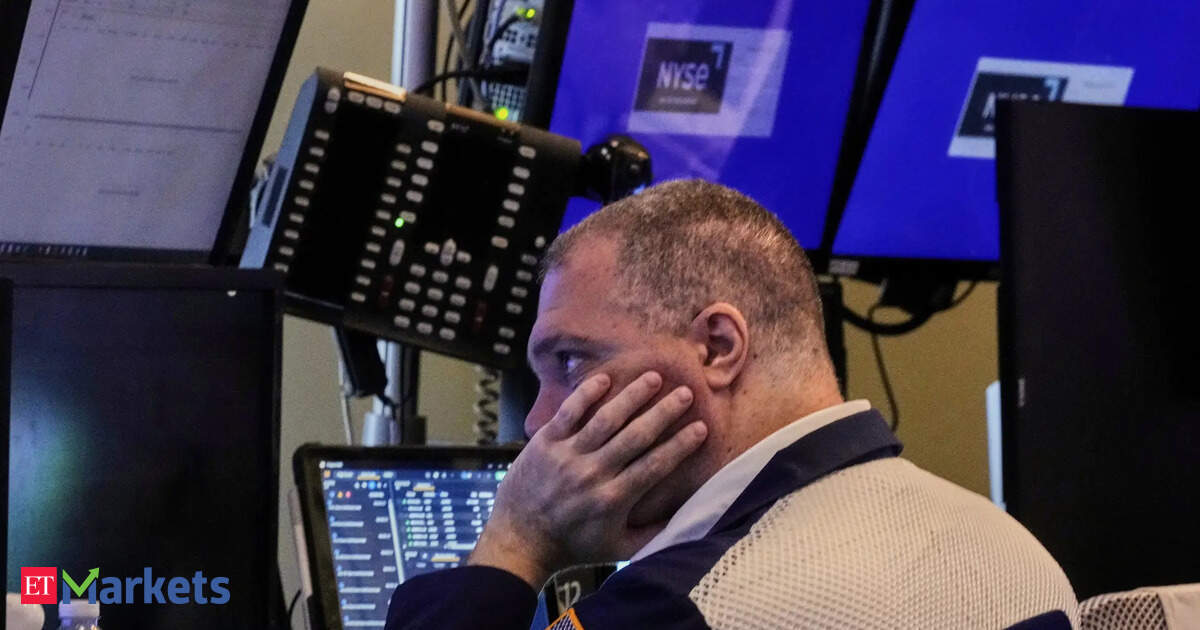Wall Street equities had sold off sharply on Monday after Trump warned of sweeping new tariffs on goods from key trading partners such as Japan and South Korea and a range of smaller countries starting in August.
Tuesday’s moves in U.S. indexes were less pronounced than in the previous session but the benchmark S&P 500 and the tech-heavy Nasdaq spent the session flitting between red and green as investors sought direction from tariff headlines. Trump appeared to broaden his global trade war with the announcement on Tuesday that he would put a 50% tariff on imported copper while he said that long-threatened levies on semiconductors and pharmaceuticals were coming soon.
The U.S. president said trade talks have been going well with the European Union and China but added that he was only days away from sending a tariff letter to the EU.
“It’s almost like markets are waiting to exhale,” while investors wait for more tariff news, said Carol Schleif, chief market strategist at BMO Private Wealth in Minneapolis, Minnesota.
“The fact that markets are holding in pretty tight, still just an eyelash away from all-time highs, shows investors are willing to give headlines the benefit of the doubt,” she said. And while investors wait for the second-quarter earnings season to begin in mid-July, they are likely relieved by the passage into law last week of the U.S. government’s spending plan, including some business-friendly tax policies, according to Schleif. The Dow Jones Industrial Average fell 165.60 points, or 0.37%, to 44,240.76, the S&P 500 lost 4.46 points, or 0.07%, to 6,225.52 and the Nasdaq Composite gained 5.95 points, or 0.03%, to 20,418.46. Among the S&P 500’s 11 major industry groups, only five showed any gains. The energy index had the biggest advance, finishing up 2.72%, while the more defensive consumer staples and utilities sectors both fell more than 1% on the day.
While investors were wary of making big moves in larger stocks, the Russell 2000 small-cap index outperformed with a 0.66% gain. The market’s cautious reaction to trade headlines contrasted with the wild volatility that was unleashed after Trump’s April 2 “Liberation Day” tariff announcements, which pushed the Nasdaq down sharply to confirm a bear market and sent the Dow and the S&P 500 into a correction. Since then, Wall Street has rebounded to regain lost ground, with the Nasdaq and the S&P 500 powering to fresh record highs last week, as a solid labor market report helped ease fears of a recession. BofA Global Research and Goldman Sachs raised their year-end targets for the S&P 500 index, broadly driven by reduced policy uncertainty, resilient corporate earnings and potential interest rate cuts.
Minutes of the Fed’s June rate-setting meeting are scheduled for release on Wednesday, potentially providing more clarity on when the central bank might resume its policy-easing cycle. In mega-cap shares, Tesla gained 1.3% after its stock recorded its steepest single-day fall in roughly a month on Monday. In other individual stocks, U.S. copper miner Freeport-McMoRan appeared to benefit from the idea of steep import tariffs on the metal, with the stock ending up 2.5%. Moderna was the S&P 500’s biggest percentage gainer, jumping 8.8% after leading medical organizations filed a lawsuit against U.S. Health Secretary Robert F. Kennedy Jr. and Department of Health and Human Services, arguing that current COVID-19 vaccine policies pose a threat to public health. Shares of solar stocks fell after Trump on Monday directed federal agencies to strengthen provisions in the One Big Beautiful Bill Act that repeal or modify tax credits for solar and wind energy projects.
SunRun sank 11.4% while Enphase Energy lost 3.6% and SolarEdge Technologies dropped 1%.
Advancing issues outnumbered decliners by a 1.51-to-1 ratio on the NYSE, where there were 156 new highs and 25 new lows.
On the Nasdaq, 2,797 stocks rose and 1,669 fell as advancing issues outnumbered decliners by a 1.68-to-1 ratio.
The S&P 500 posted 17 new 52-week highs and 4 new lows while the Nasdaq Composite recorded 83 new highs and 51 new lows.
On U.S. exchanges 17.03 billion shares changed hands compared with the 18.31 billion moving average for the last 20 sessions.

